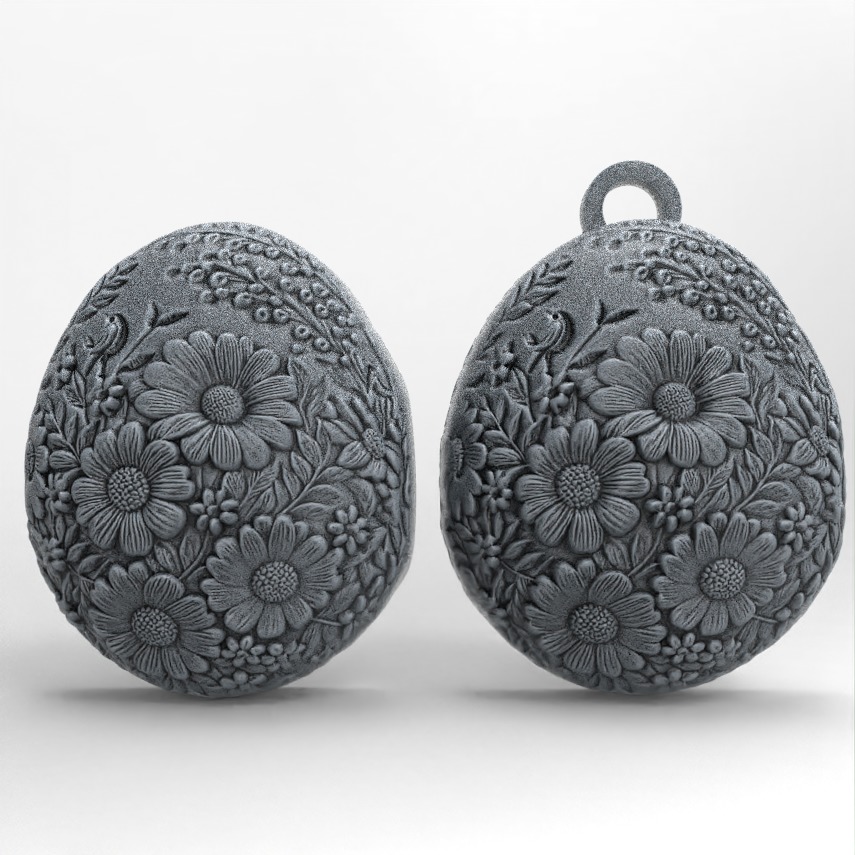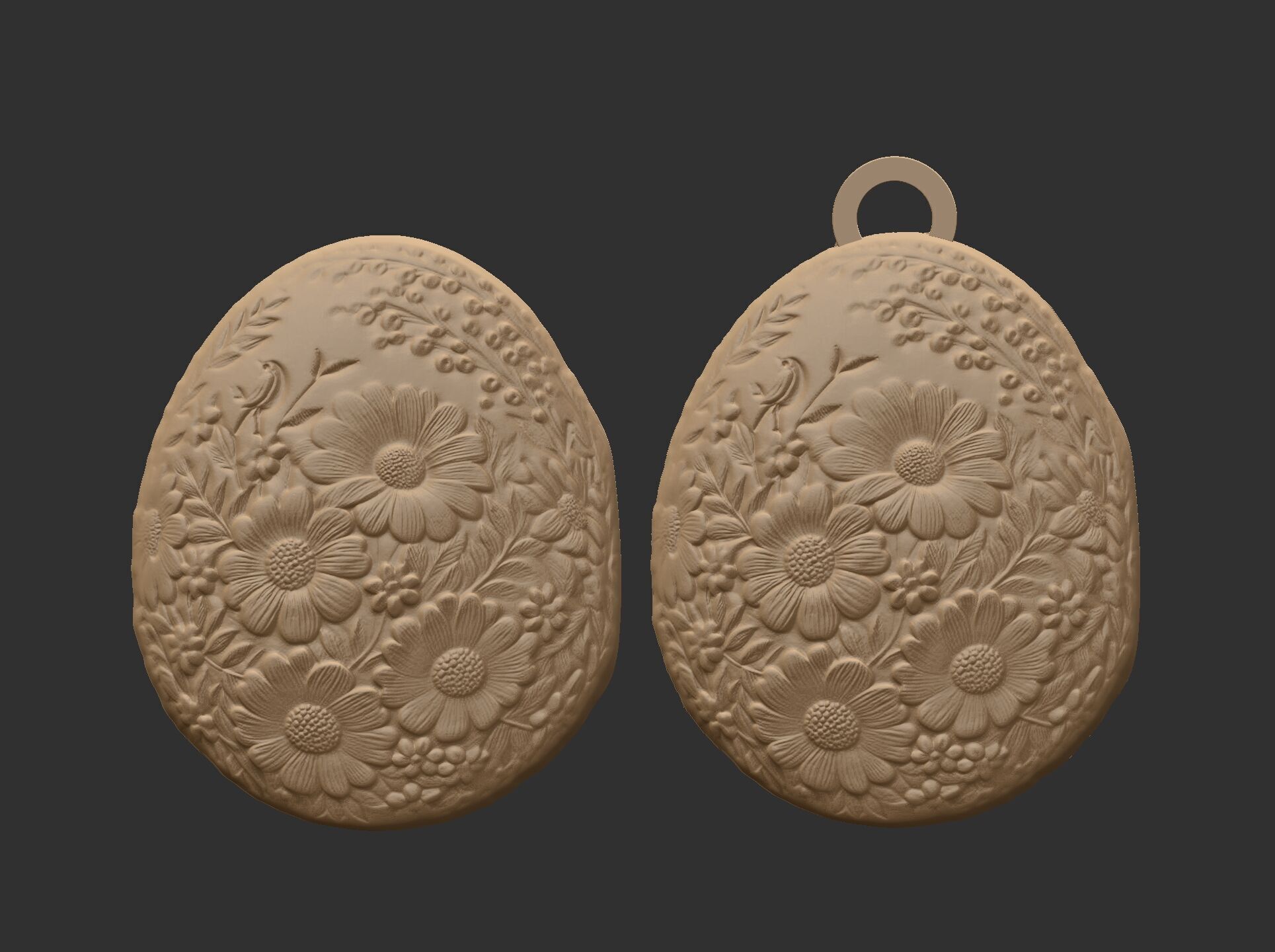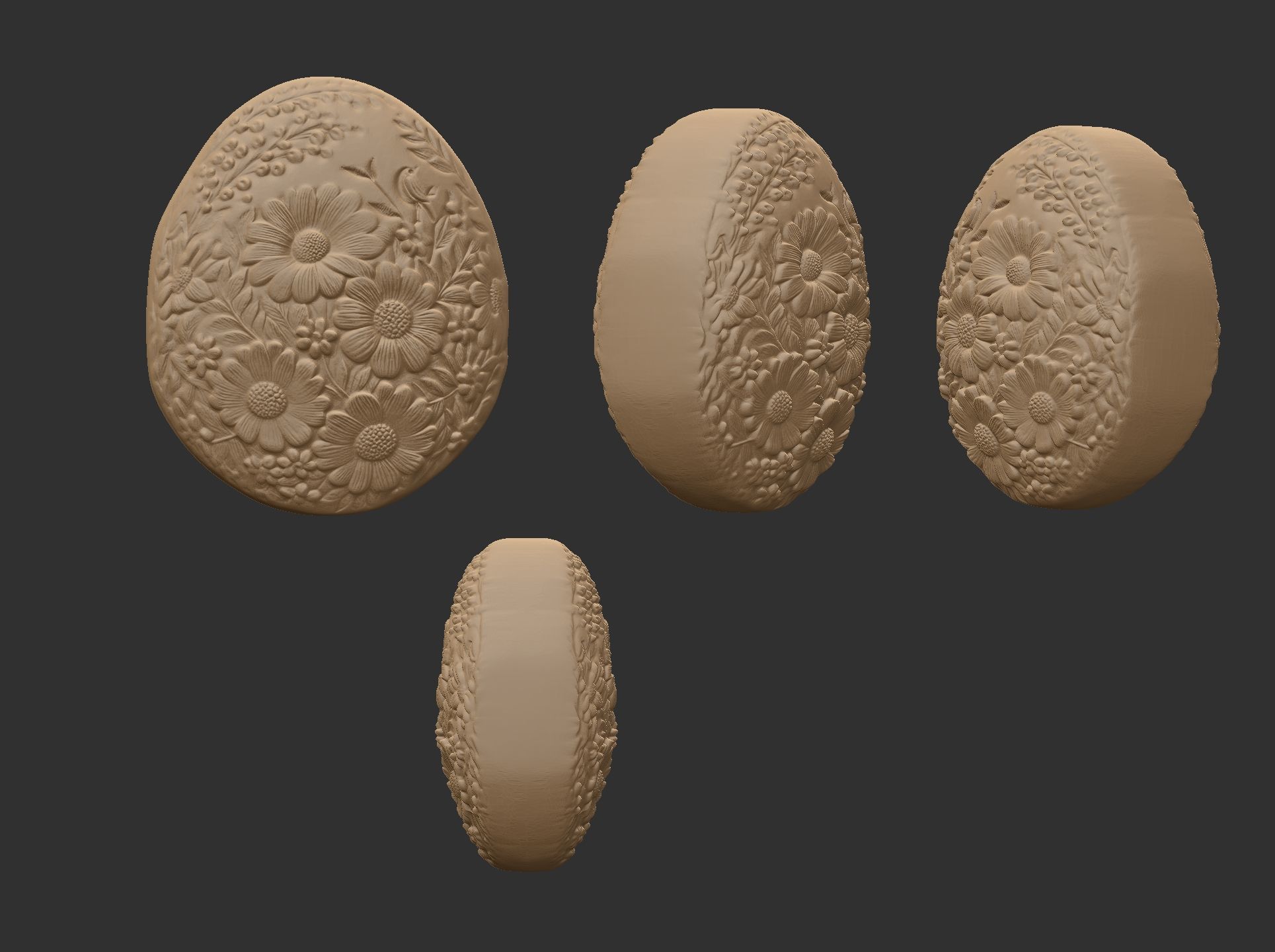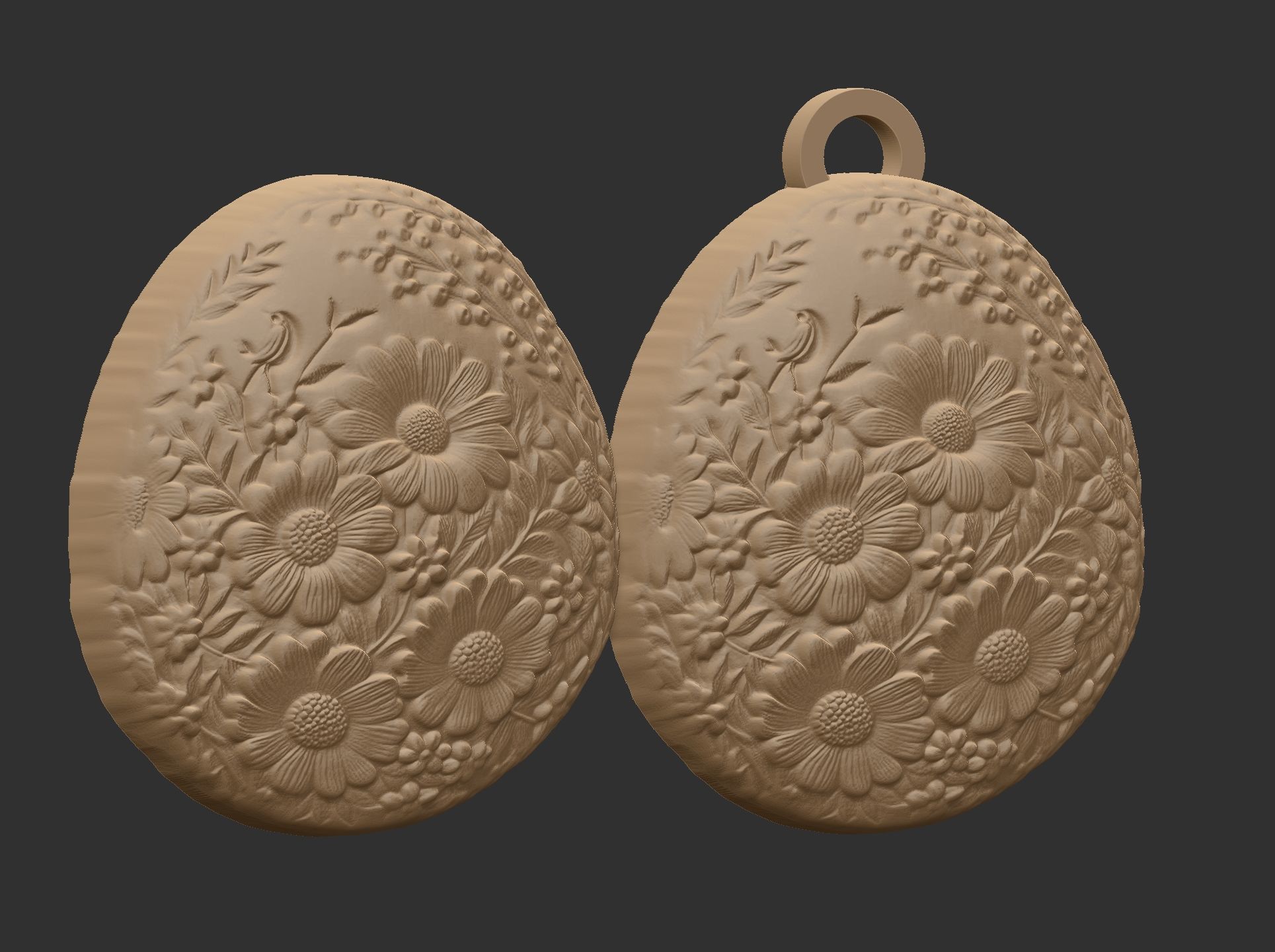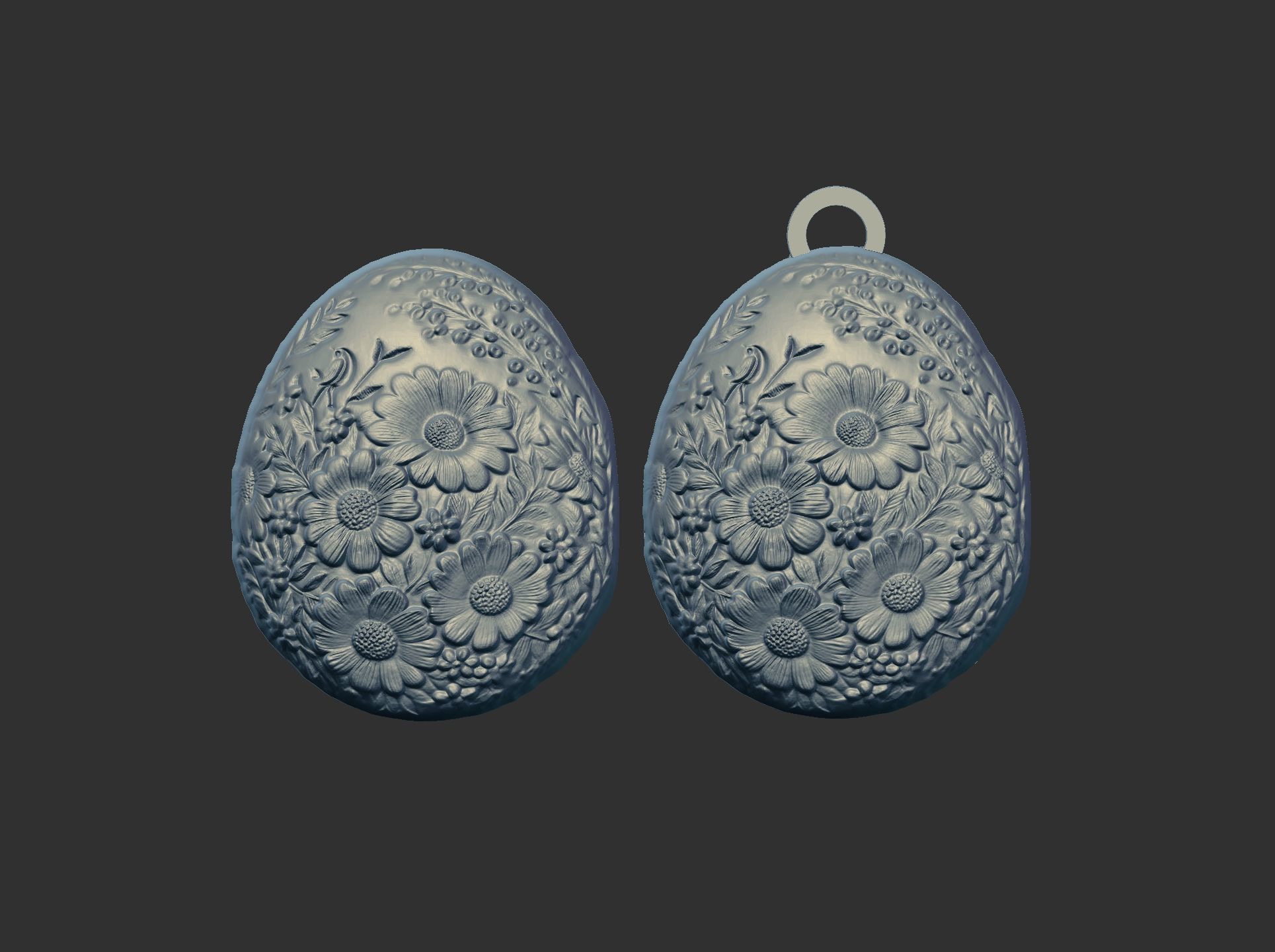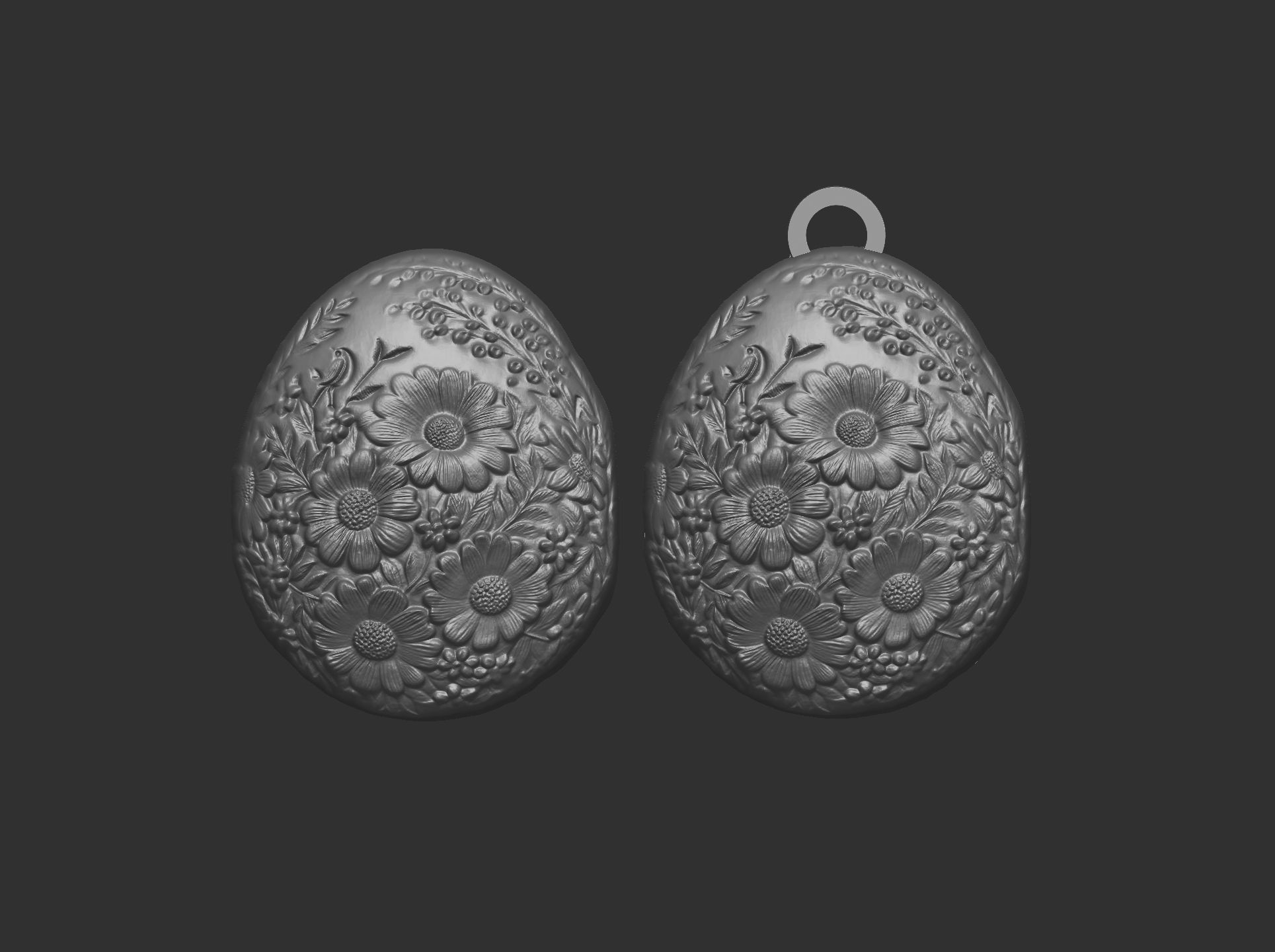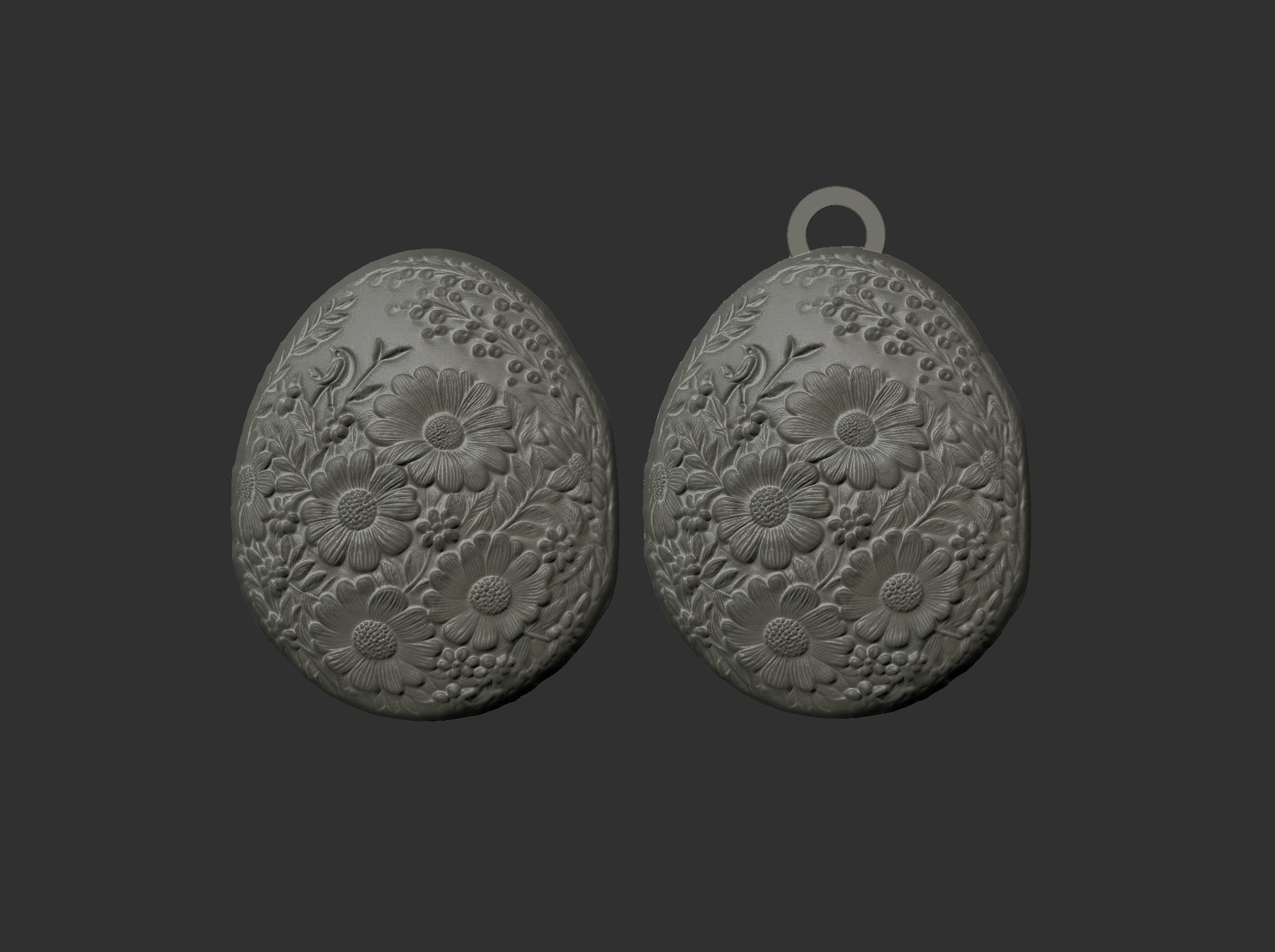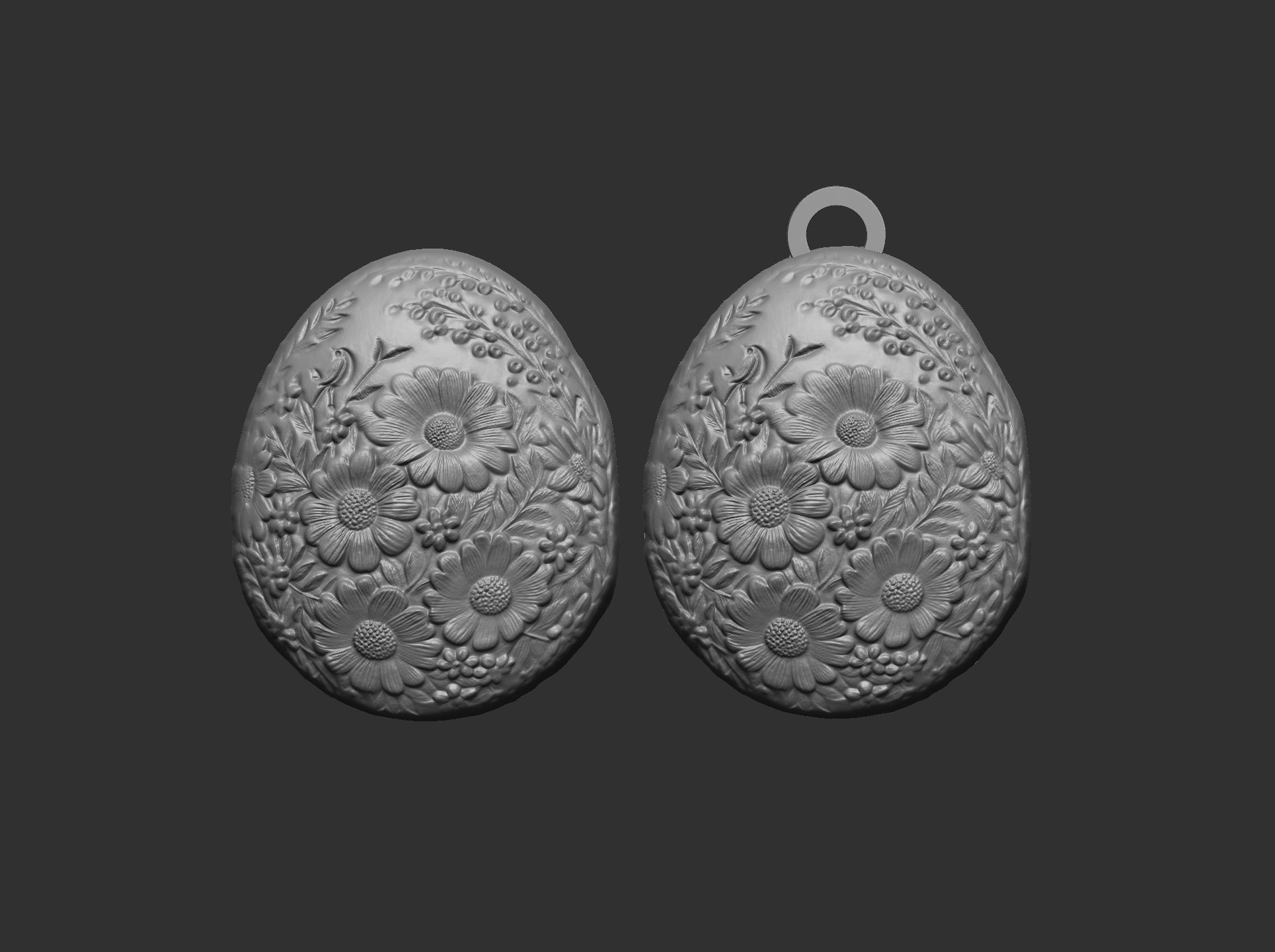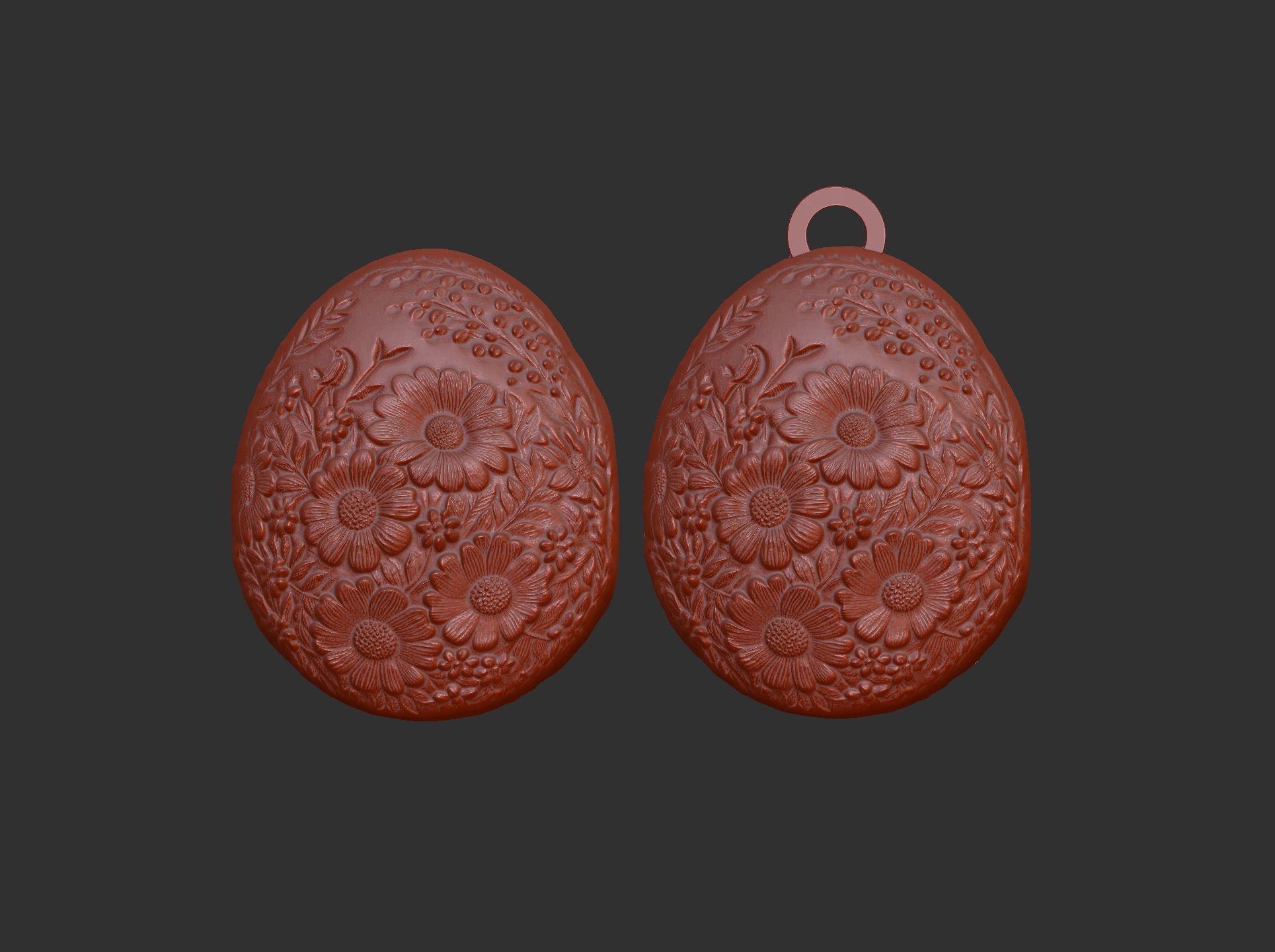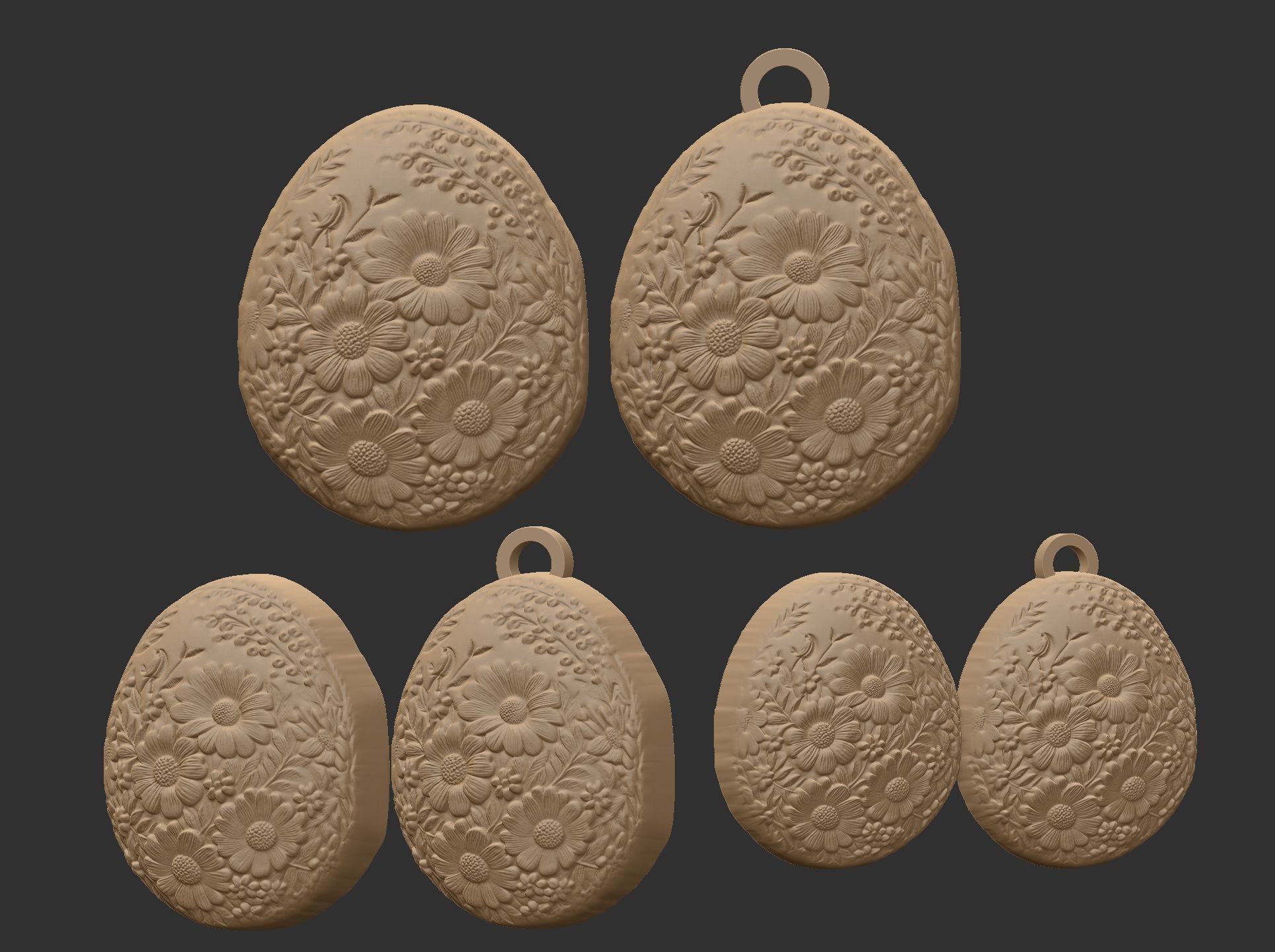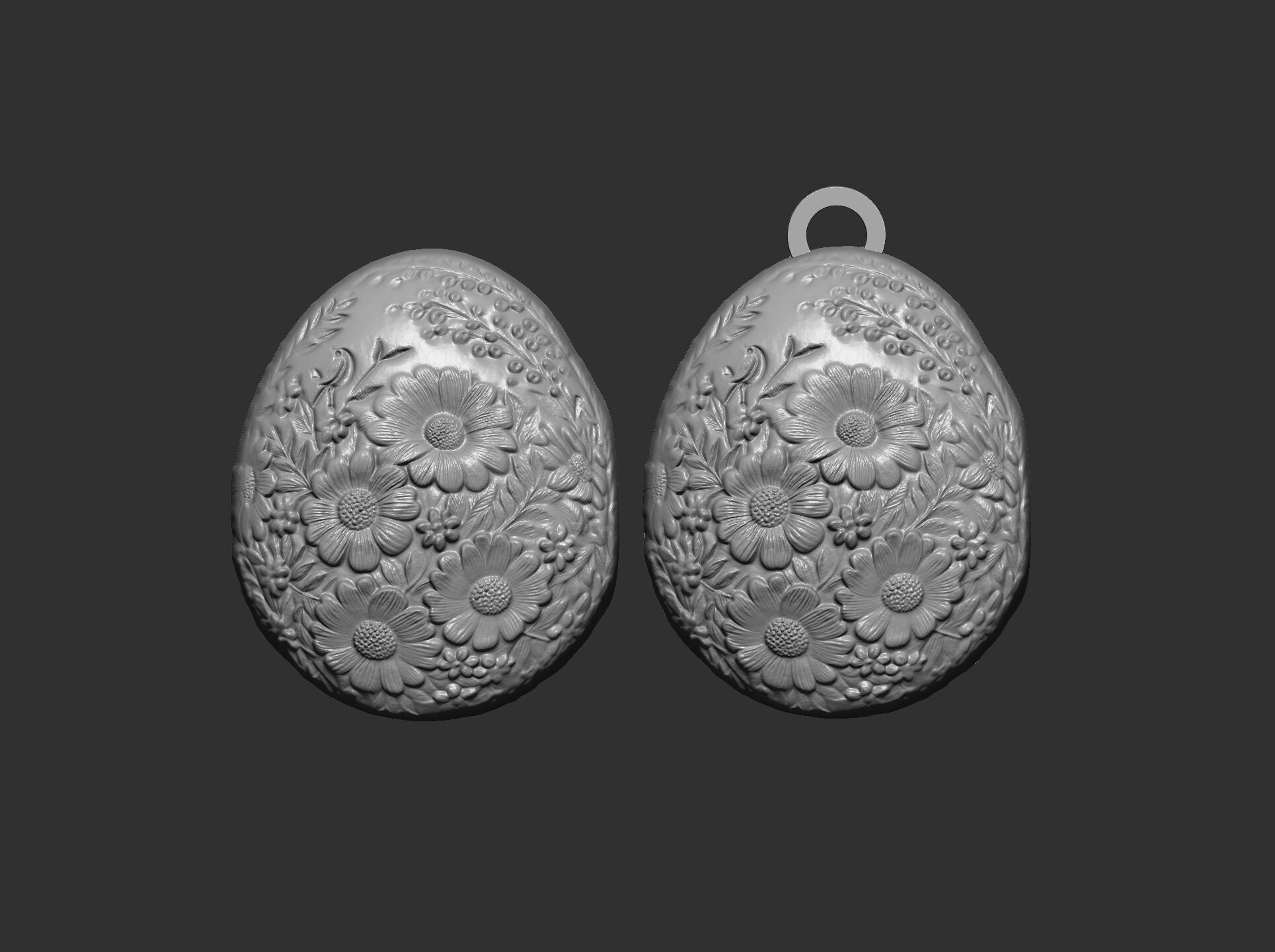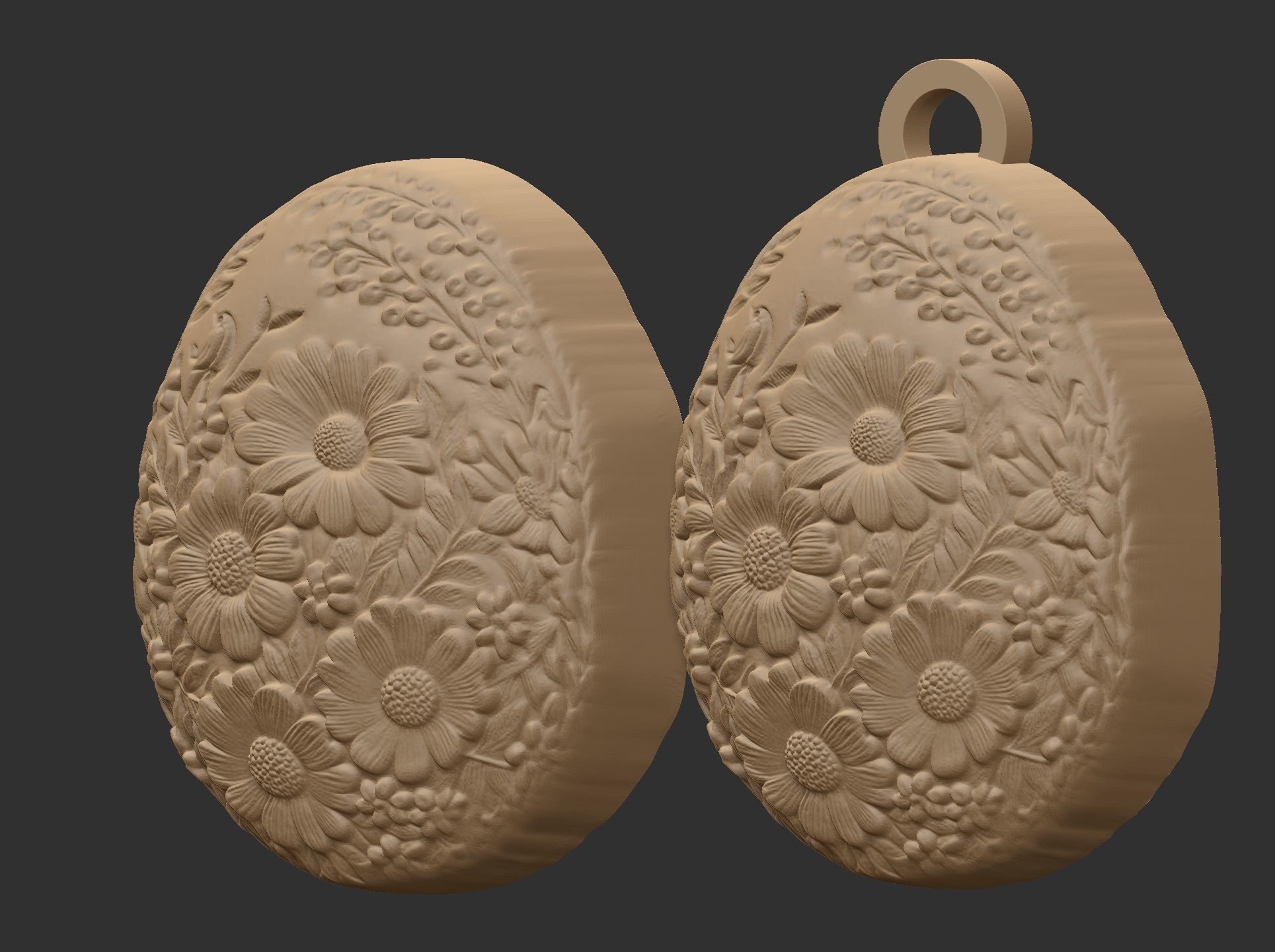
easter egg with full of flower keychain 3D print model
Easter Egg: The egg itself should be stylized with smooth, gently curved edges and a clean, elegant shape. It can be designed to appear slightly raised from the background to give it more prominence, symbolizing the central element of the design. The surface of the egg should be decorated with floral patterns, ranging from blooming flowers like daisies, tulips, and lilies to abstract petals or vines. The egg can also feature soft lines or subtle textures to give it a more detailed appearance, but it should retain a smooth and flowing aesthetic to keep it light and joyful.
Flowers: The flowers can cover the surface of the egg, interwoven into an intricate pattern, either with a repeating motif or a more organic, scattered design. They can vary in size, with larger flowers in the center and smaller blossoms around the edges, creating a layered, balanced effect. The petals should have soft, curved edges with detailed veining, and the flowers can be designed to be raised from the egg’s surface, creating a sense of depth and texture. Flowers could be a combination of blossoms like roses, daisies, tulips, or lilies, giving the design a bright and lively feel. A few leaves or vines could intertwine between the flowers to add natural detail.
Base Relief Design: The base relief design would have the egg and the flowers gently raised from the background, with smooth transitions between the different elements. The egg would stand out more prominently, while the flowers would be subtly sculpted into the surface. This relief style ensures that the design remains elegant and balanced without too much intricate detail that could complicate the carving or printing process.
Features for 3D Printing and CNC Compatibility:Geometry: The model should have smooth, flowing geometry that emphasizes the curves of the egg and the gentle rise of the flowers. The flowers should be well-defined but not overly intricate to ensure they can be easily reproduced. The egg should have a clean, continuous shape with no sharp edges to maintain a soft, organic look. The pattern on the egg should be clearly defined, but the relief should not be too deep to ensure the design remains stable during production.
Support and Orientation: The model should be oriented so that it minimizes overhangs, with the flowers and egg rising gently from the background. This approach will help prevent any structural issues during printing or carving and ensure the details are sharp and well-represented. The design should also be balanced in a way that allows for easy support and clear carving.
Material Considerations: For 3D printing, materials like PLA, resin, or PETG are ideal, as they will provide smooth, detailed results. For CNC carving, materials like wood (such as birch, walnut, or maple), MDF, or acrylic would be suitable, as these allow for clean, crisp carvings and an elegant finish.

